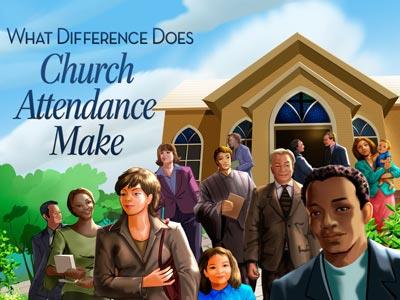-
The False Church Series
Contributed by Rodney Kelley on Nov 28, 2017 (message contributor)
Summary: Sermon Eight of a series
The False Church
Revelation 3: 14-22
I want to begin this final section by pointing out once again that the seven churches were seven literal churches. This is important to remember as we interpret what is written, yet in hindsight of the scriptures it is easily seen that these churches have represented sections, times, or dispensations within the church age. It is necessary at this point of our study for me to point out the dispensations that I believe these churches represent. All have elements that apply to the church today, but it is clear in hindsight that they represent sections of the church age. I do not believe in strict dispensations, rather, I believe that dispensations overlap and form God’s plan for man.
Ephesus was a church that had their first love wane. They needed a fresh love. They were the church that needed a second honeymoon. Everything they did was out of duty. They had lost their fervor. We see the early church, and at the end of the age leaven slipped in and corrupted their reasons for serving the Lord. This would be a picture of the first century church.
The second church to whom a letter was written was Smyrna. This was the church that needed courage because they were a persecuted church. Here is the picture of the second and third centuries, as the height of persecution agaisnt the church was prevalent.
Third, we see the church at Pergamos. This was a church, much like today, it had a problem with tolerating sin, hence my title for them, the church of tolerance. The compromising church was prevalent from 300 to about A. D. 500. The word pergamos means married, and
during this age the church was married to the world. The doctrine of Balaam mentioned was the doctrine of tolerance. God has always hated the tolerance of sin.
The next church was Thyatira. This was the permissive Church since they allowed sinful leaders to pervert the church. The time frame is longer now and extends to the 1500’s. This was the church during the Dark ages, a time that sin was prevalent.
We come to the church in Sardis, the dead church. They had a few saved, but they had died in their orthodoxy and rituals, and allowed carnality. This church time began in the 1500’s and extended to about the early to mid 1700’s. The Reformation was during this time. Toward the end of this age the printing press began to make the Scriptures readily available. Every major language had a translation completed from the Textus Receptus manuscripts. The Word of God began to flourish and was used to form laws and nations.
Revival began to sweep around the world. This is pictured by the church of Philadelphia. The only church of which God did not scold in some way. This began with the age of the awakening of world wide missions and evangelization. This is the time from the 1700’s until now. But we can see the great day of the Philadelphian church is waning.
Now we come to Laodocea. This is the church about which God had nothing good to say.
This is the last of the seven churches. Laodocea was located about 40 miles southeast of Philadelphia. Approximately 35 years prior to this letter being written, the city had been destroyed by an earthquake, but it was such a wealthy city that it had the ability to rebuild in a short time. They were famous for rich black wool, a medical school, and close by were the hot springs of Hieropolis and the cold water of Colossae. The water would meet in this city and be neither cold nor hot.
We have no record that Paul ever went to Laodocea, but he was concerned for the church. In Colossians 2:1-2, he wrote,
For I would that ye knew what great conflict I have for you, and for them at Laodicea, and for as many as have not seen my face in the flesh; That their hearts might be comforted, being knit together in love, and unto all riches of the full assurance of understanding, to the acknowledgement of the mystery of God, and of the Father, and of Christ.
Granted there were a few saved in this church, as far as the literal application is concerned. It is surprising of how Jesus spoke to this church.
The great Judge now speaks as this letter to this church is begun. He is the “Amen.”
This was a recognized Hebrew name of God! We find it used in Isaiah 65:16, that says, “That he who blesseth himself in the earth shall bless himself in the God of truth.” The word “truth” is the Hebrew word “Amam,” from which we get our word “Amen.” He declares his Deity repeatedly to this church, and here calls Himself the Truth. What a reflection of John 14:6, where Jesus declared He was the Truth. He is also the faithful and true Witness. And so He will be in the day of judgment. By His Word and testimonies, a swift witness against all ungodly men will be heard. Mankind will stand without excuse before a holy God.

 Sermon Central
Sermon Central



